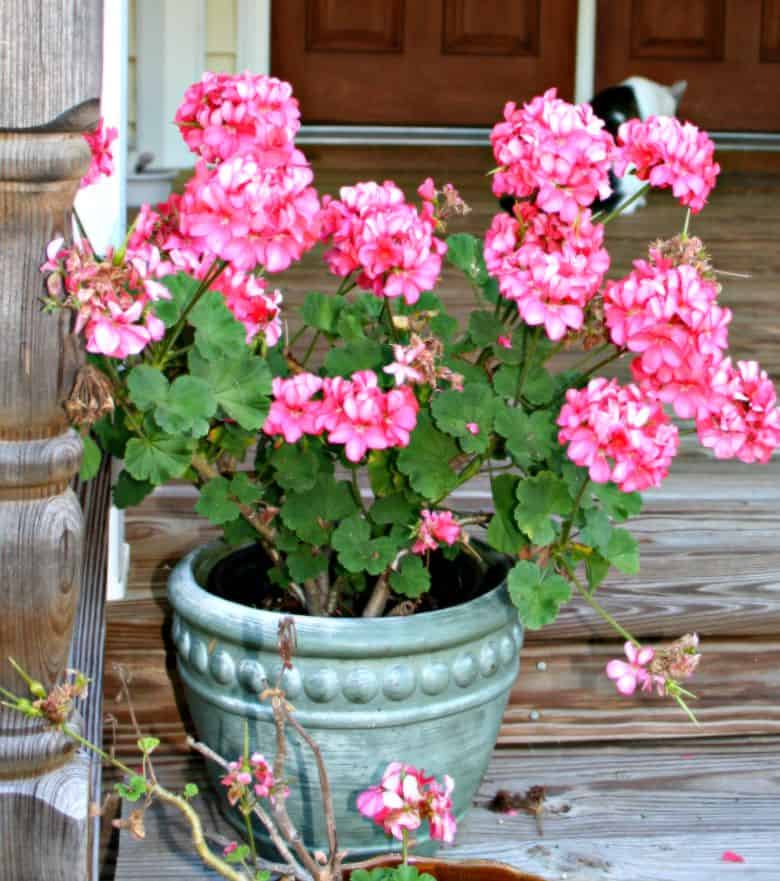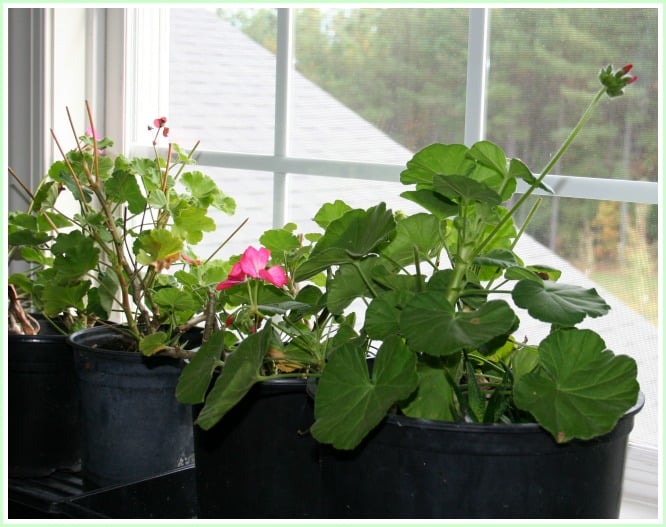If you understand winter geranium care, you can keep your geraniums growing inside during the winter months. Then when spring arrives, all you need to do is move them back outside for instant garden beauty.
 Winter Geranium Care
Winter Geranium Care
I grow geraniums all year long. My winter geraniums move outside in April, usually towards the end of the month. If a frost threatens, I just pull them into the house overnight. I keep them in pots until late May when I transplant some into the window boxes on my porch.
To grow geraniums inside, transplant them into pots in October. Use house plant soil (the bagged kind from the garden center). If you use garden soil, you run the risk of digging up and transplanting insects or their eggs into the house. Not something you want to over winter, I am sure!
I cut my geraniums back, giving them a good pruning when I move them inside. Over the first several weeks or months inside they tend to lose leaves and flowers and create a big mess.
To keep the flowers from ruining my white window sills, I’m vigilant about snipping back spent flowers and brushing away the fallen petals. Vacuuming the area frequently also helps keep the petals from smushing into the hardwood floor of my office where my geraniums spend the winter.
I save pie plates and put clean pie tins or plates under the pots to catch drips and spills.
Indoor geraniums require bright light so a southern window is essential. Light levels generally fall in the winter in temperate regions so don’t skimp on light.
Winter geranium care also includes watering. I cut back on watering, and water only about once a week. I do not fertilize my plants during the winter. I wait until spring when I move them outdoors and then give them a bit of 20-20-20 garden plant fertilizer to spark them into new life.

Some of my geraniums growing in my office windows.
Winter Geranium Care – Home Garden Joy Top Tips
- Bring geraniums indoors before the first frost of the season for you region.
- If you are digging geraniums up from window boxes, use a clean pot and fresh, bagged garden potting soil purchased from the garden center.
- Use old, clean pie plates (the kind you buy frozen pies in from the grocery store – well scrubbed) or old dishes to catch water drips.
- Place geraniums in a very bright, sunny spot inside, preferably a south-facing window.
- Water sparingly in the winter.
- Do not fertilize during the winter.
- Trim or snip off spent flowers and yellow leaves before they drop to keep the mess down.
- Vacuum or sweep up any fallen petals, flowers and leaves to prevent them from staining window sills, floors and carpets.
Problems with Indoor Geraniums
The biggest problem I see with my indoor geraniums is from insects that accidentally hitch a ride on the pots, plants or soil. Before moving house plants indoors for the winter, use a strong spray from the garden hose and give them a bath while they are outside. The spray of water should knock off many of the insects and allow them to stay outside where they below.
White flies or soil gnats can also be problematic. A nice way to deal with them without using pesticides is a sticky trap. A sticky trap looks like a piece of yellow cardboard or a post-it-note on a stick. The yellow color attracts insects and the paper has a sticky film on it which captures them without harming the plant. You can buy them, below, on Amazon (I am an affiliate).
Just push the pointed end into the flower pot soil and the yellow portion (in this example shaped like a butterfly) does the rest. It’s great to catch flying insects without pesticides and safe to use around pets and kids.





